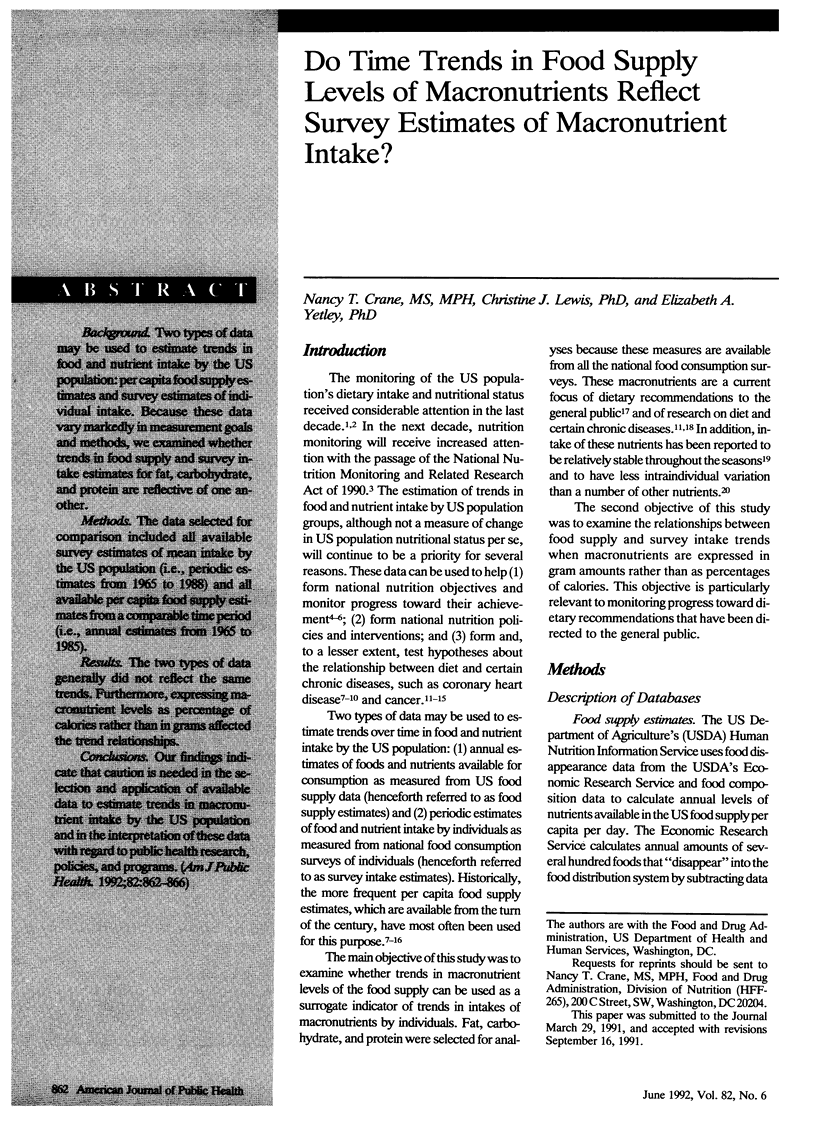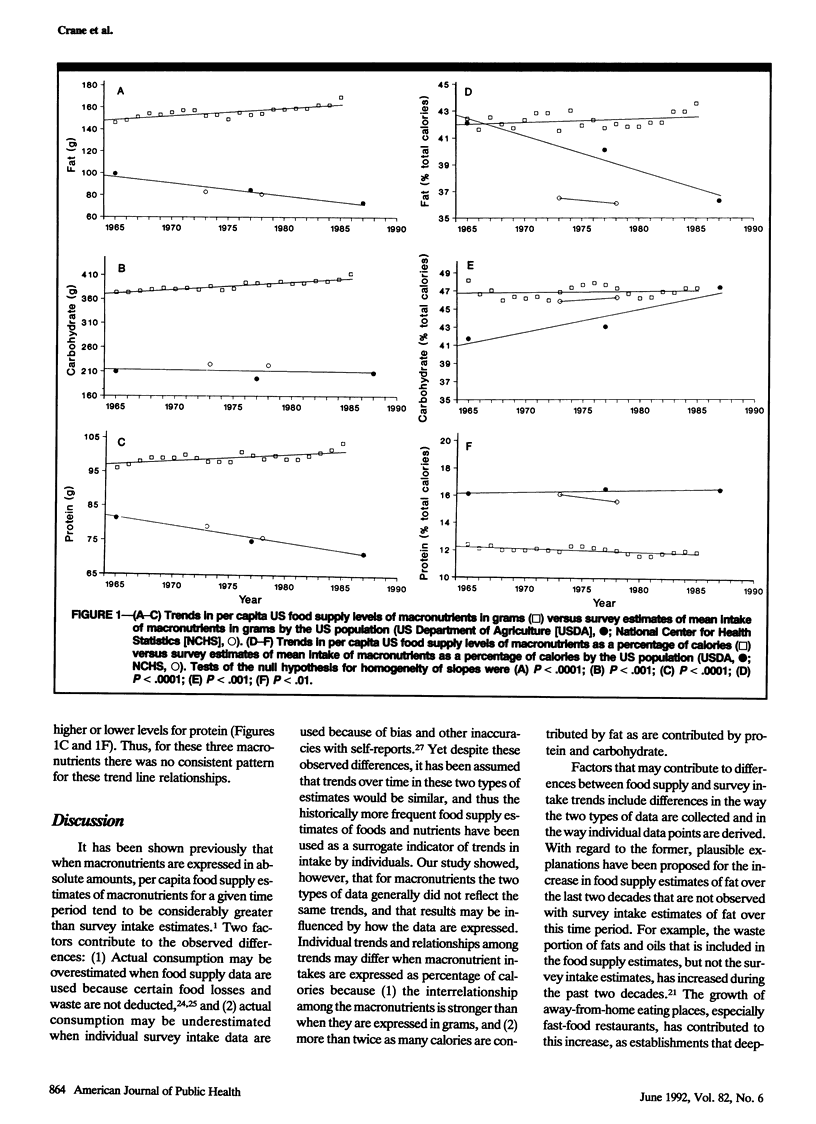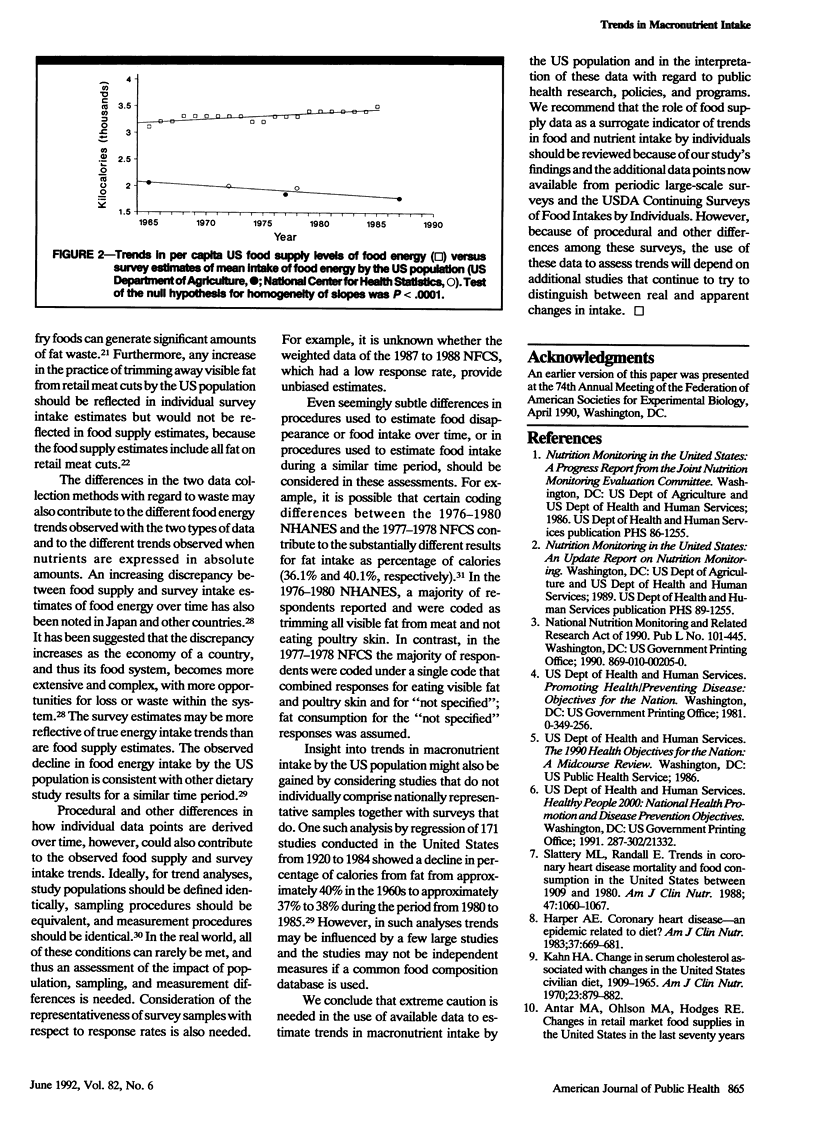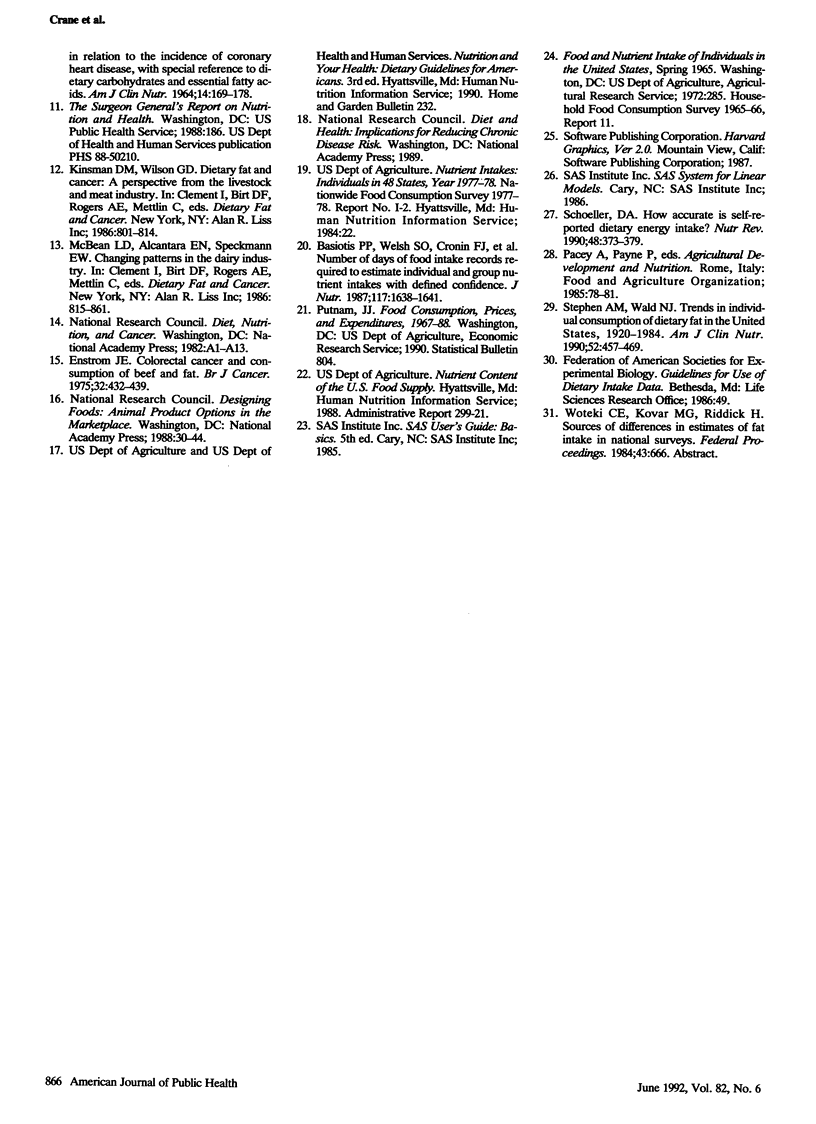Abstract
BACKGROUND. Two types of data may be used to estimate trends in food and nutrient intake by the US population: per capita food supply estimates and survey estimates of individual intake. Because these data vary markedly in measurement goals and methods, we examined whether trends in food supply and survey intake estimates for fat, carbohydrate, and protein are reflective of one another. METHODS. The data selected for comparison included all available survey estimates of mean intake by the US population (i.e., periodic estimates from 1965 to 1988) and all available per capita food supply estimates from a comparable time period (i.e., annual estimates from 1965 to 1985). RESULTS. The two types of data generally did not reflect the same trends. Furthermore, expressing macronutrient levels as percentage of calories rather than in grams affected the trend relationships. CONCLUSIONS. Our findings indicate that caution is needed in the selection and application of available data to estimate trends in macronutrient intake by the US population and in the interpretation of these data with regard to public health research, policies, and programs.
Full text
PDF




Selected References
These references are in PubMed. This may not be the complete list of references from this article.
- ANTAR M. A., OHLSON M. A., HODGES R. E. CHANGES IN RETAIL MARKET FOOD SUPPLIES IN THE UNITED STATES IN THE LAST SEVENTY YEARS IN RELATION TO THE INCIDENCE OF CORONARY HEART DISEASE, WITH SPECIAL REFERENCE TO DIETARY CARBOHYDRATES AND ESSENTIAL FATTY ACIDS. Am J Clin Nutr. 1964 Mar;14:169–178. doi: 10.1093/ajcn/14.3.169. [DOI] [PubMed] [Google Scholar]
- Basiotis P. P., Welsh S. O., Cronin F. J., Kelsay J. L., Mertz W. Number of days of food intake records required to estimate individual and group nutrient intakes with defined confidence. J Nutr. 1987 Sep;117(9):1638–1641. doi: 10.1093/jn/117.9.1638. [DOI] [PubMed] [Google Scholar]
- Enstrom J. E. Colorectal cancer and consumption of beef and fat. Br J Cancer. 1975 Oct;32(4):432–439. doi: 10.1038/bjc.1975.244. [DOI] [PMC free article] [PubMed] [Google Scholar]
- Harper A. E. Coronary heart disease--an epidemic related to diet? Am J Clin Nutr. 1983 Apr;37(4):669–681. doi: 10.1093/ajcn/37.4.669. [DOI] [PubMed] [Google Scholar]
- Kahn H. A. Change in serum cholesterol associated with changes in the United States civilian diet, 1909-1965. Am J Clin Nutr. 1970 Jul;23(7):879–882. doi: 10.1093/ajcn/23.7.879. [DOI] [PubMed] [Google Scholar]
- Schoeller D. A. How accurate is self-reported dietary energy intake? Nutr Rev. 1990 Oct;48(10):373–379. doi: 10.1111/j.1753-4887.1990.tb02882.x. [DOI] [PubMed] [Google Scholar]
- Slattery M. L., Randall D. E. Trends in coronary heart disease mortality and food consumption in the United States between 1909 and 1980. Am J Clin Nutr. 1988 Jun;47(6):1060–1067. doi: 10.1093/ajcn/47.6.1060. [DOI] [PubMed] [Google Scholar]
- Stephen A. M., Wald N. J. Trends in individual consumption of dietary fat in the United States, 1920-1984. Am J Clin Nutr. 1990 Sep;52(3):457–469. doi: 10.1093/ajcn/52.3.457. [DOI] [PubMed] [Google Scholar]


